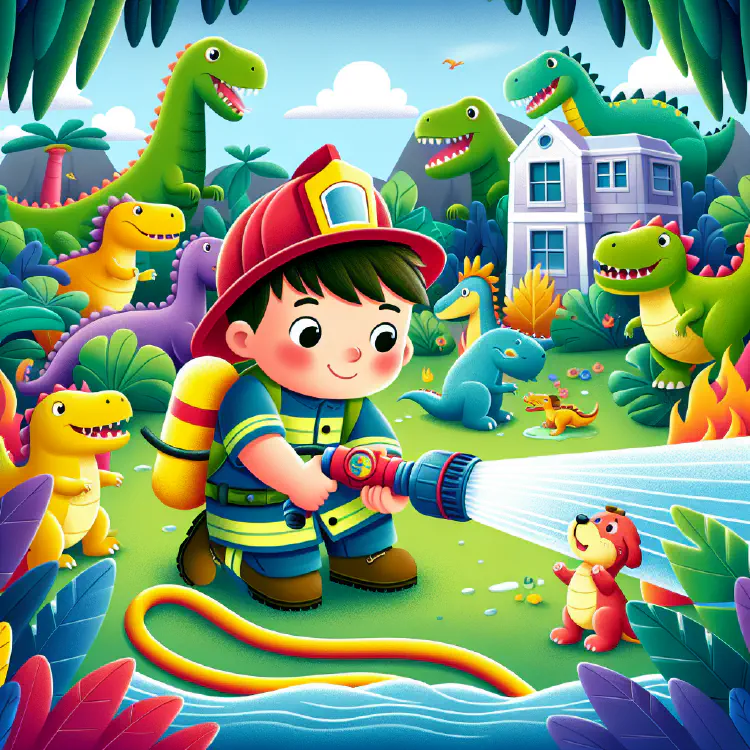How to Personalize Bedtime Stories for Your Child
Personalized bedtime stories engage children by featuring them as characters, incorporating their interests, and addressing challenges, fostering imagination, confidence, and parent-child bonding.
- 4 min read

Bedtime stories have been a cherished tradition for generations, serving as a magical bridge between the waking world and the realm of dreams. As parents, we understand the importance of these nightly tales in soothing our little ones to sleep and fostering a love for reading. But what if we could take this experience to the next level by personalizing bedtime stories for our children? In this blog post, we’ll explore the art of crafting unique, tailored bedtime stories that will captivate your child’s imagination and create lasting memories.
The Power of Personalized Bedtime Stories
Before we dive into the how-to’s, let’s consider why personalizing bedtime stories can be so impactful. When children hear stories that feature them as the main character or incorporate elements from their daily lives, they become more engaged and invested in the narrative. This personal connection can help:
- Boost self-esteem and confidence
- Encourage creativity and imagination
- Address specific fears or concerns
- Reinforce positive behaviors and values
- Strengthen the parent-child bond
Now that we understand the benefits, let’s explore some strategies for creating personalized bedtime stories for your little ones.
- Start with Your Child’s Interests
The first step in crafting a personalized bedtime story is to consider your child’s current interests and passions. Whether it’s dinosaurs, princesses, space exploration, or underwater adventures, using themes that excite your child will immediately grab their attention. For example, if your preschooler is obsessed with firefighters, you could create a story where they become a brave firefighter for a day, saving their stuffed animals from a pretend fire.
- Incorporate Familiar Settings and Characters
Another way to personalize bedtime stories is by setting them in familiar locations and including people your child knows. This could be your home, their school, or a favorite park. You can also include family members, friends, or even pets as supporting characters in the story. For instance, a bedtime story for toddlers might feature a magical adventure in their own backyard, with their best friend from daycare joining in on the fun.
- Use Your Child’s Name and Characteristics
One of the simplest yet most effective ways to personalize a story is by making your child the main character. Use their name throughout the tale and incorporate their physical characteristics or personality traits. This helps them identify with the protagonist and imagine themselves in the story. For example, “Once upon a time, there was a brave little girl named Sarah with curly brown hair and a big, bright smile…”
- Address Current Challenges or Milestones
Personalized bedtime stories can be a great tool for helping children navigate challenges or celebrate milestones in their lives. If your child is struggling with sharing toys, you could create a story where the main character learns the importance of sharing and experiences the joy it brings. Similarly, if your child is about to start school, a story about a character’s first day of school can help ease their anxiety.
- Involve Your Child in the Storytelling Process
Make the storytelling experience interactive by involving your child in the creation process. Ask them questions as you go along, letting them decide what happens next or choose between two options. This not only personalizes the story further but also helps develop their creativity and decision-making skills. For instance, you might ask, “Should Sarah the brave explorer climb the tall mountain or swim across the wide river?”
- Use Props and Visual Aids
Enhance the storytelling experience by incorporating props or visual aids. This could be as simple as using your child’s favorite stuffed animal as a character in the story or creating a quick sketch to illustrate a scene. For more tech-savvy parents, you could even use apps that allow you to insert your child’s photo into a digital storybook.
- Incorporate Daily Events and Experiences
Draw inspiration from your child’s day-to-day life to create relatable and personalized stories. Did they learn something new at school? Did they have a playdate with a friend? Did they try a new food? Use these experiences as a starting point for your bedtime stories. This not only personalizes the tale but also helps your child process and reflect on their daily experiences.
- Create a Series or Recurring Character
Develop a series of bedtime stories featuring a recurring character based on your child. This allows you to build upon previous stories and create a rich, evolving narrative that your child can look forward to each night. For example, you could have a series of “Sarah the
